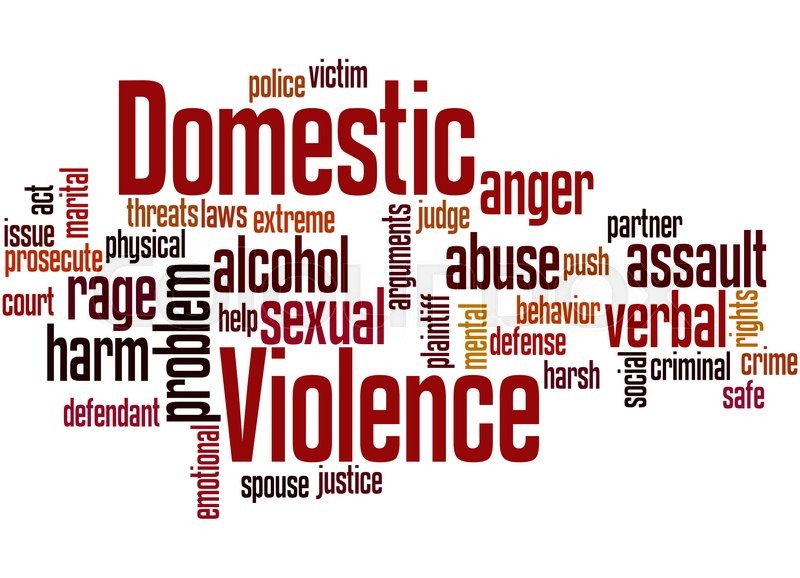October is Domestic Violence Awareness Month – Spread the Word!
Stop for a second. Look around you. Can you tell who is being abused or who has been abused by a partner or family member? Maybe you?
Obvious physical bruises or marks aside, the damage may be hidden, under clothing or emotional scarring that’s never seen. Domestic Violence knows no boundaries and has no prejudices. According to the National Center for Injury Prevention and Control, Centers for Disease Control and Prevention, in a study done in 2010, “More than one in three women and one in four men in the United States have experienced rape, physical violence and/or stalking by an intimate partner in their lifetime.”
October is Domestic Violence Awareness Month. By wearing the color purple, you signify awareness of those who suffer, those who are victims, and those who lost their lives to domestic violence.
Starting in October 1981, it was one single day, called the “Day of Unity,” by the National Coalition Against Domestic Violence. As time went on, it began to get more attention and grew to a weeklong event. Eventually, by 1987, the first Domestic Violence Awareness (DVA) month began.
Resolution Research wants to understand how many people have either personally experienced domestic violence or have experienced domestic violence through the observance of others. We are conducting an online study to get answers to these serious questions and to raise awareness. In addition, we are donating one dollar for every person who participates in this study to the National Coalition Against Domestic Violence (www.ncadv.org). You can help raise awareness and raise money to fight this oftentimes secret and scary violence against others. You may do so in total confidence knowing that we are only sharing results in aggregate as our survey is 100% confidential.
According to Helpguide ( www.helpguide.org), the behavior of an abuser is chosen behavior. It is not the victim’s fault. The victim did not provoke or cause the abuser to act out. The abuser may also try to blame the behavior on alcohol, drugs, or stress, but the bottom line is this: the behavior of an abuser is intentional. We are all responsible for our own actions and behaviors. We make the choice to act a certain way. Abusers make the choice to harm someone, be it physically, sexually, emotionally, and/or psychologically.
The number one fact most telling in how deep rooted the problem lies, is that most domestic violence incidents are never reported, according Safe Horizon (www.safehorizon.org). There are many places to get help or to give help in every community, both at the local level as well as the state and federal level. Hotlines, safe shelters, counseling, legal assistance, and medical treatment are all available 24/7.
Nothing could have thrust this month’s domestic violence awareness in the limelight more than the Ray Rice video released by TMZ (www.tmz.com). I cringed when I saw it, my heart broke, my voice cried out in anger and in protest. It is a sizzling hot topic, to say the least. More players have been arrested and suspended for domestic violence since that incident. The NFL made some changes to their domestic violence policies, including a six game suspension policy (instead of two games) with NFL Commissioner, Roger Goodell, apologizing for appearing to not take Rice’s actions seriously. People were asking, “How could his fiancée marry him after that?” There were even women shown on the news supporting Rice by wearing his jersey. But the backlash from women’s groups, domestic violence groups, and even NFL players, brought about action and much needed change to those policies.
Let your voice be heard! Your answers and opinions are important to us and help in the challenge to raise public awareness. It only takes a few brief minutes of your time. In addition, by participating in the study by Resolution Research, we will donate one dollar on your behalf to the National Coalition Against Domestic Violence to help them in the ongoing effort to raise awareness and hopefully aid in the prevention of domestic violence.
Writer: Tami Bluett, author of “Boomers and Beyond” blog for Resolution Research.
Please, participate in the study today! Click here.
Help us share this with others and raise awareness! Highlight & paste this link http://resolutionresearch.qualtrics.com/SE/?SID=SV_26abWju94TguIIZ and share it with persons you know on Facebook, Twitter, elsewhere. Thank you!
NEED HELP OR MORE INFORMATION?
HOTLINE: Call 1-800-799-SAFE (7233)
List of Shelters for Women in US: http://www.womenshelters.org
National Coalition Against Domestic Violence: http://www.ncadv.org/
Safe Horizon: http://www.safehorizon.org/
Warning Signs of Abuse: http://www.thehotline.org/is-this-abuse/abuse-defined/
What does an abusive relationship look like? http://www.thehotline.org/is-this-abuse/
What does a healthy relationship look like? http://www.thehotline.org/is-this-abuse/healthy-relationships/
What is Domestic and Intimate Partner Violence? The Office on Women’s Health Explains: http://womenshealth.gov/violence-against-women/types-of-violence/domestic-intimate-partner-violence.html
Want to participate in other paid research studies? Join our panel to stay informed!

October is Domestic Violence Awareness Month
